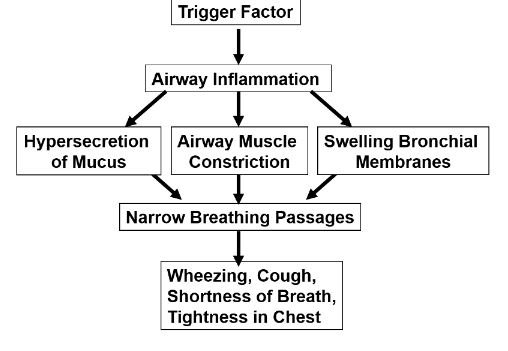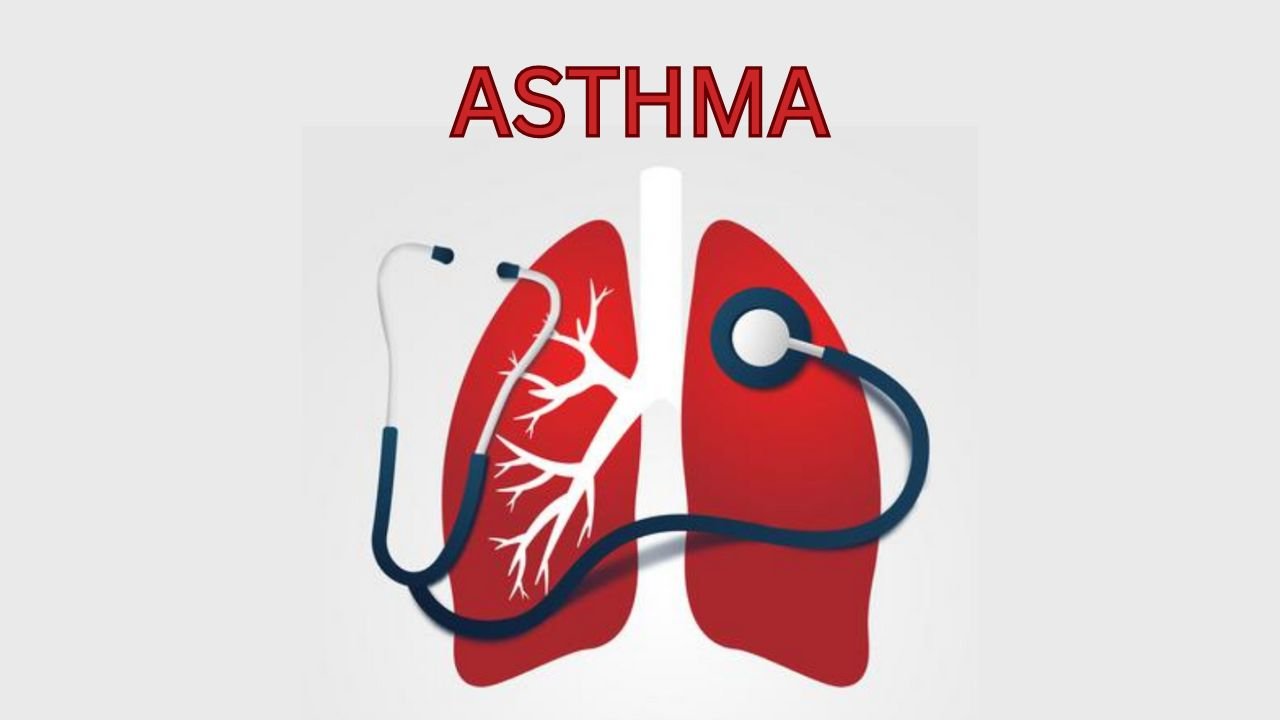ASTHMA
ASTHMA
Asthma is a chronic disease of the air passages characterized by inflammation and narrowing of the airways. Symptoms of asthma include shortness of breath, cough, and wheezing. It is commonly presents in childhood and is usually associated with conditions such as eczema and hay fever. The key feature is airway hyper-responsiveness, which can be triggered by many factors. If not treated promptly, asthma has a high mortality rate.

CAUSES:
It has multifactorial causes and is a multifactorial pathology that is influenced by both genetics and environmental exposure. Its triggers can include:
- Viral respiratory tract infections
- Lack of exercise or increased body fat and obesity
- Gastroesophageal reflux disease
- Chronic sinusitis
- Environmental allergens and use of aspirin or beta blockers
- Smoking and related harmful substances like tobacco
- Insects, plants and chemical fumes
- Emotional factors like stress.
The different TYPES of asthma include the following :

Mixed Asthma:
In this type, immediate type I reactivity appears to be combined with intrinsic factors.
Aspirin induced Asthma:
It is induced by ingestion of aspirin and related compounds in the body.
Exercise induced Asthma:
The symptoms for this type of asthma vary from slight chest tightness and cough to severe wheezing/ cold after 5 to 20 minutes of sustained exercise.
Occupational Asthma:
It takes place due to inhalation of industrial fumes, dust, allergens and gases.
Asthma is classified or can be classified as:
Mild Intermittent:
The asthma symptoms happen or last twice a week or less, night symptoms are twice a month or less than that.
Mild persistent:
This consists of asthma symptoms lasting more than just twice a week, but no more than once a day, symptoms at night are more than twice a month. Asthma attacks that occur may affect efficiency of individual.
Moderate persistent:
This has asthma symptoms that occur every day and during nighttime the symptoms are more than once a week.
Severe persistent:
This type has symptoms occurring or lasting throughout the day and on most days; nighttime symptoms occur pretty often. Physical activities and efficiency likely become limited.
PATHOPHYSIOLOGY:
Asthma is a condition of acute, fully reversible airway inflammation, often following exposure to and environmental triggers. The process:
- It begins with the inhalation of an irritant or an allergen.
- Then, due to bronchial hypersensitivity, airway inflammation and an increase in mucus production takes place.
- This leads to a significant increase in airway resistance, which is most pronounced on expiration.

There can be different reasons for the airway obstructions that go on during asthma. They may be due to inflammatory cell infiltration, mucus hypersecretion with mucus plugs formation and smooth muscle contraction.
SIGNS AND SYMPTOMS:
- Due to history of cough and wheezing.
- The symptoms get worse at night.
- Mild chest pain and tremor in the hands.
- Presence of nocturnal coughing spells.
- Children with imminent arrest may be drowsy, unresponsive, cyanotic and confused.
CLINICAL MANIFESTATIONS:
The three most common symptoms of asthma are cough, dyspnea and wheezing. Mucus production, inspiratory and expiratory wheezing, use of accessory muscles, diaphoresis, tachycardia, hypoxemia and central cyanosis are some of the other factors or results.
MANAGEMENT OF ASTHMA:
The goal here is to allow the person with asthma to live a normal life. The treatment should be as simple as possible and individualized to the patient’s lifestyle. The patient and their family must be included during the planning. The major goal is to prevent chronic and troublesome symptoms and to maintain normal activity and pulmonary functioning, minimize emergencies, provide optimum therapy, and meet family expectations as well.
When it comes to medical management of asthma, it mainly is done with the support of drug therapy.
When we talk about management of asthma through naturopathy:
- It is a disease caused by manifestation of disturbance in the internal environment of the body, identifying and eliminating it is of prime importance.
- It is based on the principle of accumulation of toxins and that this is the root cause of all diseases.
- Prevention and eliminating the root cause is the essential job of a naturopathic physician.
AIM OF NATUROPATHIC TREATMENT:
It is a medicine for the mind and body wherein the person’s body is treated as a whole. It believes that diseases occur when man goes against the law of nature. It aims to follow the rules of nature. It consists of elimination of toxins by a variety of therapies. The approach is natural and improves lung capacity and reduces excess mucus secretion.
The principles of treatment include avoiding triggers, smoking, drugs and food additives, stimulating the immune system naturally, reducing inflammation, managing overall body weight and fat percentage as well as managing nutritional deficiencies.
Fasting therapy: allows the body to create a unique physiological healing status.
Sunbathing: vitamin D deficiencies have a close relationship with respiratory infections.
Hydrotherapy: includes water immersion, different baths and use of packs of both hot and cold water.
Massage therapy: it plays a major role in reducing anxiety and stress that is aggravated during asthma.
Acupuncture: helps to identify pressure points and promotes relaxation.
Yoga: highly effective practice that reduces hypersensitivity and responsiveness. Exercises like various kinds of pranayama and other breathing exercises.
Vitamin C and D: reduce the risk of asthma.
All these are highly beneficial in overcoming issues pertaining to asthma. Through concentrated efforts in the right direction, we can achieve amazing positive results with consistency that will help us in the longer run to maintain and lead a healthy lifestyle.







